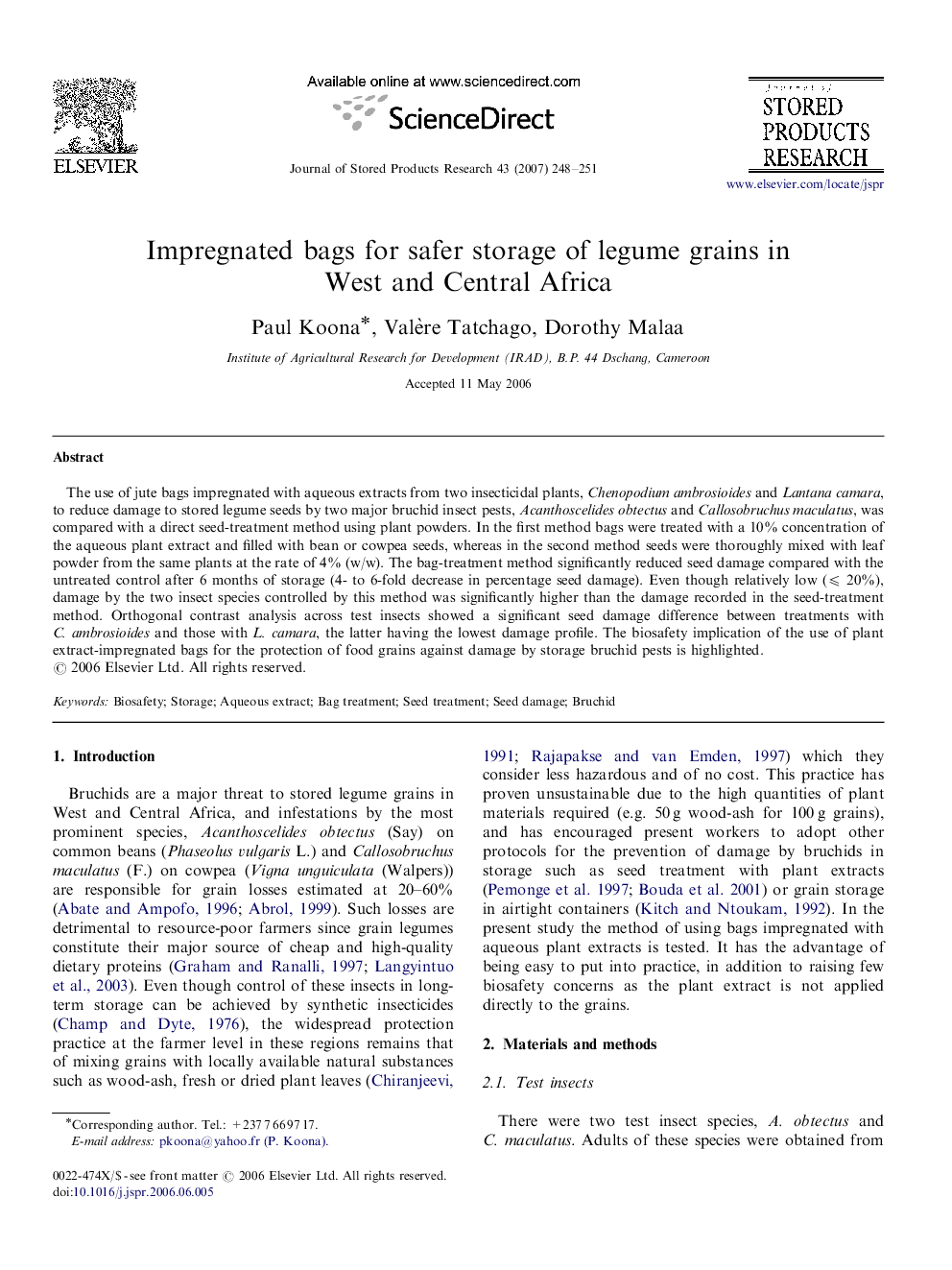| Article ID | Journal | Published Year | Pages | File Type |
|---|---|---|---|---|
| 4517538 | Journal of Stored Products Research | 2007 | 4 Pages |
Abstract
The use of jute bags impregnated with aqueous extracts from two insecticidal plants, Chenopodium ambrosioides and Lantana camara, to reduce damage to stored legume seeds by two major bruchid insect pests, Acanthoscelides obtectus and Callosobruchus maculatus, was compared with a direct seed-treatment method using plant powders. In the first method bags were treated with a 10% concentration of the aqueous plant extract and filled with bean or cowpea seeds, whereas in the second method seeds were thoroughly mixed with leaf powder from the same plants at the rate of 4% (w/w). The bag-treatment method significantly reduced seed damage compared with the untreated control after 6 months of storage (4- to 6-fold decrease in percentage seed damage). Even though relatively low (⩽ 20%), damage by the two insect species controlled by this method was significantly higher than the damage recorded in the seed-treatment method. Orthogonal contrast analysis across test insects showed a significant seed damage difference between treatments with C. ambrosioides and those with L. camara, the latter having the lowest damage profile. The biosafety implication of the use of plant extract-impregnated bags for the protection of food grains against damage by storage bruchid pests is highlighted.
Related Topics
Life Sciences
Agricultural and Biological Sciences
Agronomy and Crop Science
Authors
Paul Koona, Valère Tatchago, Dorothy Malaa,
